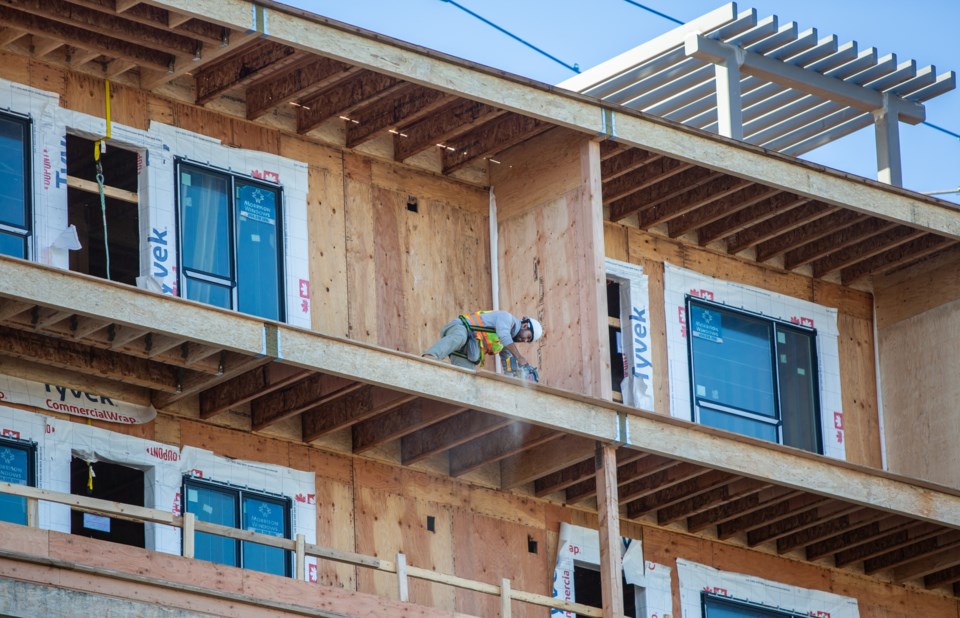The Eby government recently passed its long-awaited housing legislation meant to help close the province’s gap between the number of homes needed and the number built.
Among several major reforms, the government will change the fees that municipalities levy on homebuilding and reduce the reliance on so-called community amenity contributions (CACs), which homebuilders pay in the form of cash or “in-kind” payments for local amenities or facilities such as community centres, below-market housing and public art.
Under the CAC system, municipalities can use their discretionary power over zoning (basically, the land-use rules that govern the kinds of structures that can exist, their use and location) as a bargaining chip to make homebuilders pay amounts based on specific formulas (e.g. $21,360 per townhouse or single-family dwelling in South Surrey) or sums negotiated between city hall and homebuilders on a case-by-case basis.
In other words, they exchange density for cash.
Consequently, CACs are often unpredictable, meaning homebuilders can’t account for them when considering projects. And crucially, municipalities can only maintain their current CAC systems by keeping zoning bylaws overly restrictive and homebuilding below levels necessary to cool home prices. This is why CACs don’t exist in Fort St. John, for example, where the demand for homes – and subsequently, home prices – is relatively low while CACs reach tens of thousands of dollars per home in the housing-starved Lower Mainland.
In short, CACs can represent yet another barrier to homebuilding in a province in dire need of more homes.
Through its new legislation, the Eby government wants to break the CAC cycle – first, by relaxing zoning in cities with more than 5,000 inhabitants to allow three to six housing units in areas currently zoned for single-family homes, and to allow taller apartment structures within 800 metres of SkyTrain stations (or 400 metres from bus exchanges). By essentially pre-zoning large swathes of urban land for more development, the provincial government will undermine the ability of municipalities to zone these areas, and subsequently their ability to extract CAC money from the sale of zoning rights.
Of course, if municipalities can’t extract CACs from homebuilders, their budgets will suffer. In anticipation of this shortfall, the province has also created a new fee – amenity cost charges (ACCs) – which municipalities can only impose on housing developments directly linked to the specific amenities in question (e.g. a new library in the same neighbourhood as the new housing development). Importantly, unlike CACs, this new fee would be known upfront before the builder decides to proceed, and the amount won’t be negotiated.
And yet, while the Eby government has identified the problem with CACs, its new legislation may not have gone far enough. What about housing projects unaffected by the province’s zoning reforms? For example, if a homebuilder proposes an apartment building development on a lot 1,000 metres from a SkyTrain station, will that builder still have to pay CACs? And will projects proposed in municipalities with fewer than 5,000 inhabitants – including some of Metro Vancouver’s most exclusive communities – still face the same roadblocks as today?
It’s also not immediately clear whether the total burden of municipal fees levied on homebuilders would decline. According to a 2022 study, which compared fees across major Canadian municipalities, Vancouver levies more than $125,000 in fees per high-rise unit – 26 per cent higher than in Toronto, 258 per cent higher than in Ottawa and 1,802 per cent higher than in Edmonton. Even if such fees become more predictable, they may still represent a significant share of the final cost paid by people living in those units, and there’s little justification for the enormous difference between cities.
On balance, the Eby government should be commended for its unprecedented housing legislation. But as the dust settles, key considerations remain, meaning the job is far from over.
Josef Filipowicz is senior fellow at the Fraser Institute.




